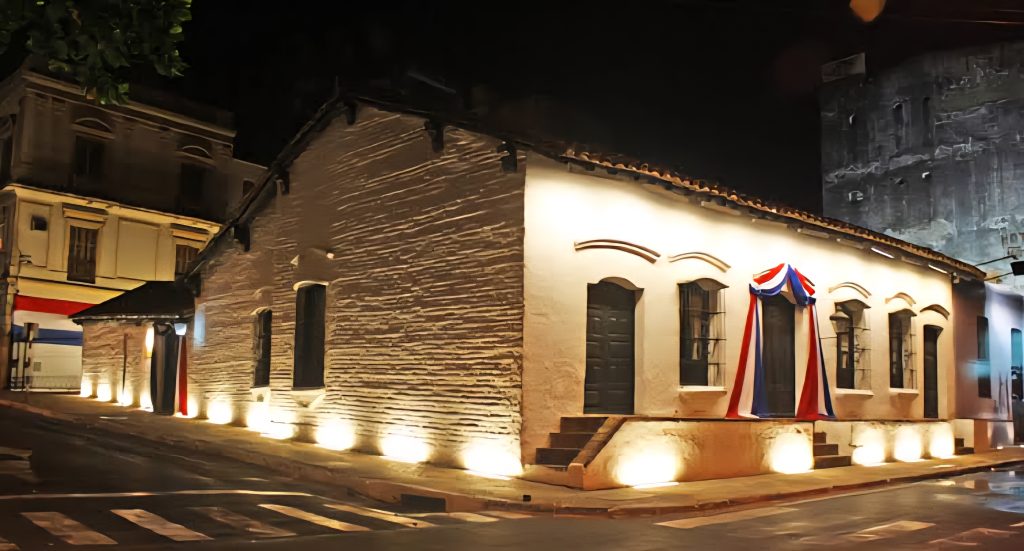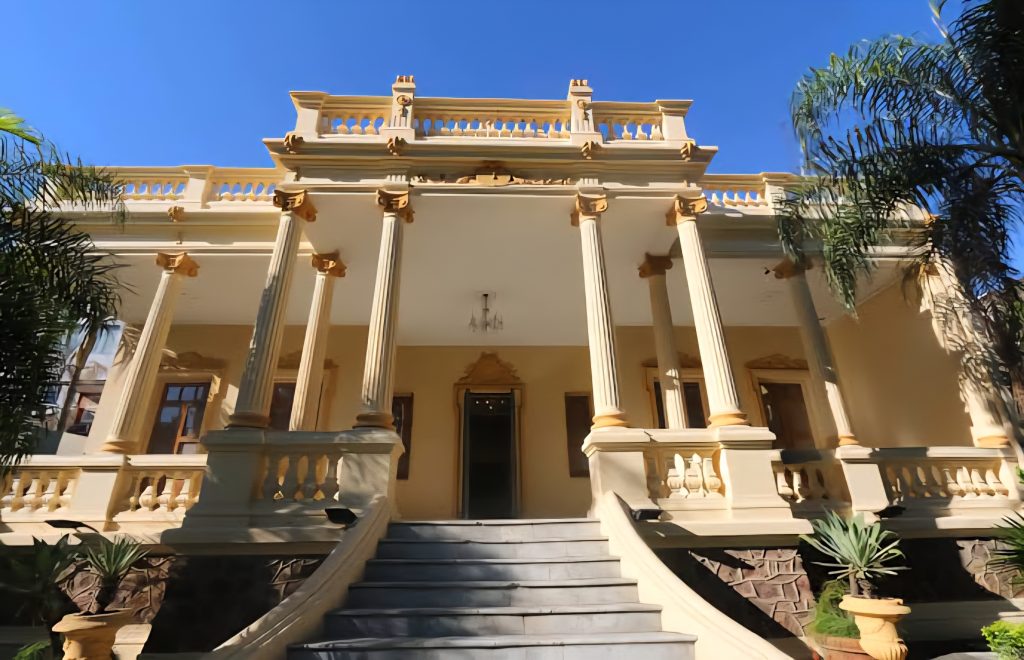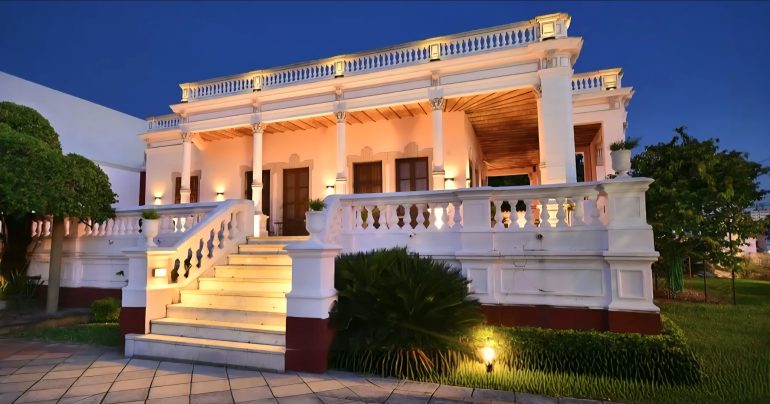Asunción, Paraguay’s vibrant capital, is far more than just the country’s political hub: it is a veritable open-air museum. In just a few days, you can immerse yourself in various chapters of its history, without even leaving the city. The key? Exploring Asunción’s museums. From the most iconic to those lesser-known nooks and crannies that hold powerful memories. Getting into them is not just straightforward, it is also affordable: most offer free entry.
Faith, and Guaraní carvings of Christ
In a predominantly Catholic country, religion is not just practised; it is practically breathed in.
Right in the historic centre, Asunción’s Metropolitan Cathedral (Independencia Nacional Street, at the corner of Avda. Mcal. López) and the Church of La Encarnación (at the corner of 14 de Mayo and Eduardo Víctor Haedo Street) stand as living temples of faith, open from 8:00 AM to 6:00 PM for anyone wishing to enter and be enveloped by their monumental architecture.
There is no charge to enter; you just need to let the silence and history touch you.
Just a few steps away, the Juan Sinforiano Bogarín Museum honours Asunción’s first Archbishop with a moving collection. Liturgical objects, Jesuit pieces, and Guaraní carvings of Christ that seem to contain centuries of devotion in a single glance.
Situated on Communeros Street, near Independencia Nacional, open from Thursday to Sunday, 11:00 AM to 6:00 PM, for a nominal fee of Gs. 10,000 (US$ 1.25).
Art, and spiritual memory
Meanwhile, the Museum of Sacred Art offers a deeply aesthetic and spiritual journey: a fusion of indigenous legacy, Franciscan influence, and European Baroque.
It is only open on Fridays and Saturdays, from 9:00 AM to 6:00 PM, and admission costs Gs. 25,000 (USD 3.14). Set on Manuel Domínguez Street, at the corner with Paraguarí.
History told with ceramics, chairs, and engines
Not everything in Asunción speaks of religion or war. There are also museums that tell stories from everyday life, from the objects we use, touch, or inherit.
The Numismatic Museum of the Central Bank, with free entry, is a brilliant example: it houses colonial coins, old banknotes, medals, and the famous ‘Golden Book’. Positioned on Federación Rusa Street, at the junction with Augusto Roa Bastos.

The Museo del Barro, on the other hand, resembles a visual poem: over 4,000 pieces including pre-Columbian ceramics, textiles, woodcuts, and mestizo carvings that trace a timeline from the 17th century, to today.
And, like many other cultural spaces in the country, admission is free. Nestled along Grabadores del Kabichu’i Street. For a little sneak peek, find Museo del Barro on Instagram.
An unexpected journey awaits at the Chair Museum (Museo de la Silla, MUSA) near the Botanical Garden: a design museum with over 700 chair models, small masterpieces that show us how a story can also be told through functionality.
Addressed at 4289 Av. Gral. José Gervasio Artigas, it opens from 8:00 AM to 12:00 PM and from 3:00 PM to 5:00 PM.
Motor enthusiasts, for their part, will find their spot in the Museum of the Touring y Automóvil Club Paraguayo (based at the crossroads of 25 de Mayo and Brasil Street, Block B, 6th Floor) with vintage vehicles that narrate another side of progress.
The museum preserves the first car to arrive in the country, owned by Dr. Andrés Barbero, whose legacy continues in the Ethnographic Museum (placed on España Street 217, just near Mompox) that bears his name. This is a a free-entry space with indigenous pieces, weapons, musical instruments, and a specialised library.
Where the nation was born

On the corner of 14 de Mayo and Presidente Franco, the The House of Independence (Casa de la Independencia) stands firm and unpretentious. Every wall, every courtyard, seems to whisper the echo of that May in 1811 when Paraguay freed itself from Spanish rule without bloodshed. It is a key site for anyone who wants to understand how the nation came into being.
Very close by, the National Historical Museum, housed in General Bernardino Caballero’s former home at Manuel Gondra Street, close to Andrés Barbero, safeguards over 380 pieces that recount feats, lives, and transformations.
Both spaces are open during morning hours and require no entry fee.
Documents from the 16th century

And for those wishing to delve into written history, the National Archive of Asunción, founded in 1541, preserves original documents from the 16th century. Amongst them there are treaties, letters, decrees, and the valuable Río Branco collection. The National Archive is found on Mariscal Estigarribia Street, at the corner with Iturbe.
The tour culminates at the National Museum of Fine Arts, at 1345 Eligio Ayala Street, where Paraguayan and European works coexist harmoniously, reflecting the evolution of art from the 19th century to the present day.
War, dictatorship, and resistance
And then there is memory that hurts. The Military Museum of the Ministry of Defence exhibits uniforms, weapons, and documents from the great wars, with rooms dedicated to figures like Francisco Solano López and Marshal Estigarribia. Guided tours allow visitors to understand each piece in its context. The museum is located along Avda. Mcal. López, between Vice President Sánchez and 22 de Septiembre Street.
A few blocks away at Chile Street 1072, the Museum of Memories occupies the very building where the dreaded National Directorate of Technical Affairs operated during Stroessner’s dictatorship. Today, that dark place has been transformed into light: testimonies, objects, and photographs tell the story of those who resisted. Here, the silence is palpable. And it teaches.
Central Railway Station
The Central Railway Station stands as a silent witness to Paraguay’s history, culture, and progress. This emblematic building, declared a National Historical Monument, was not only the country’s first railway station. It now seeks a new identity as a cultural space. Today, it houses the Railway Museum, a site that invites visitors to step into Paraguay’s 19th-century past, told through its own compelling narrative.
Located on Eligio Ayala Street, between Mexico and Paraguarí, the museum is open Tuesday to Sunday from 9:00 AM to 5:00 PM. Entry costs Gs. 5,000 for Paraguayan residents and Gs. 10,000 for others.
Asunción’s museums
From the spiritual to the military, from the artistic to the everyday; Asunción invites you to look beyond its traffic and politics. Asunción’s museums are not just exhibition spaces: they are open doors to Paraguayan identity. And in most cases, you simply need to be brave enough to step inside. Access is usuallly free, the experience always invaluable.


